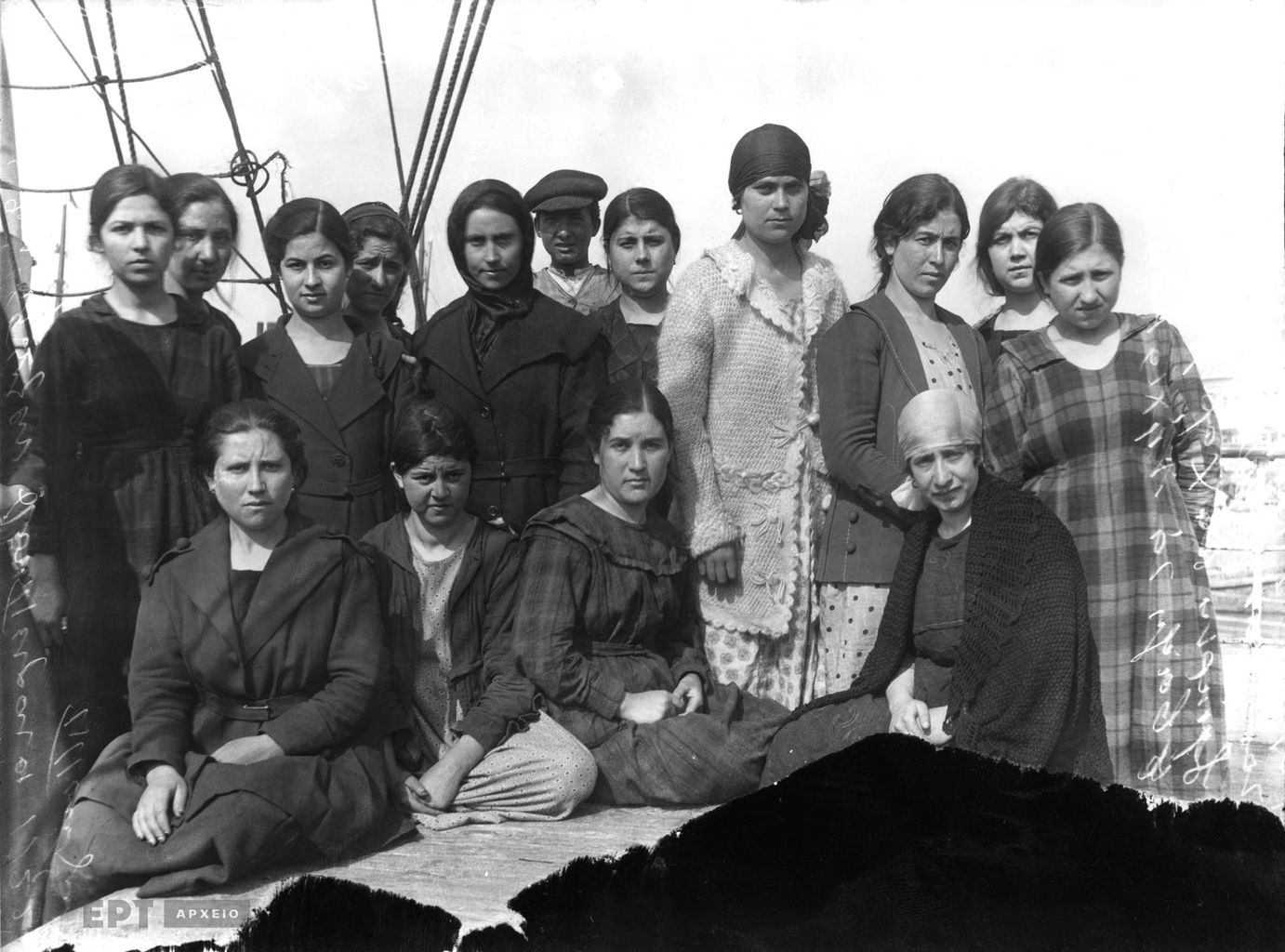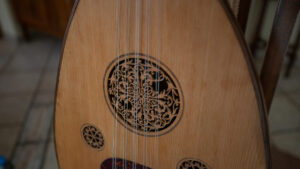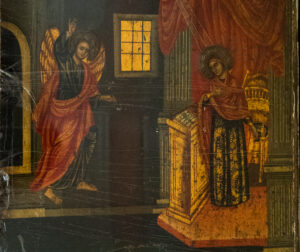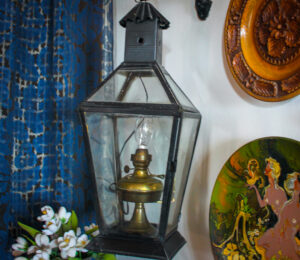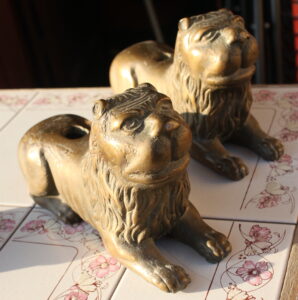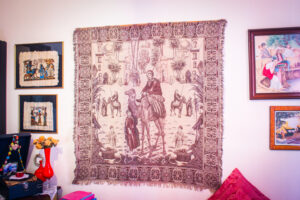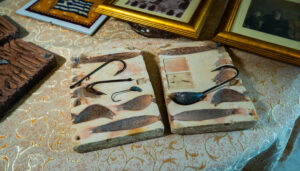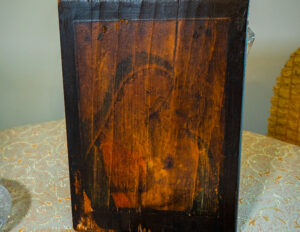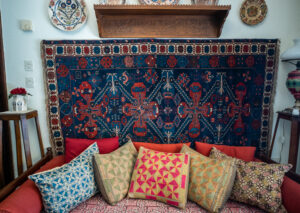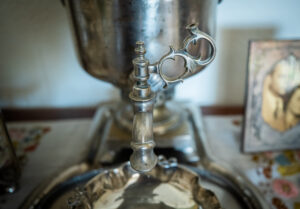Vasilis Kaptanoglou was born in Prokopi, Cappadocia, in 1907. At the beginning of 1922, he arrived in Piraeus with his mother and stayed in a makeshift shack in Tampouria with his brother’s family, who had arrived a few months earlier. Throughout his life, he never stopped playing the oud, the same one he had brought with him from Prokopi.
Amid the makeshift shacks of Tampouria, Vasilis met Eleni Dimou from Chili on the Euxine Sea, another refugee who had arrived in Greece with her father and her two sisters. This icon of the Annunciation, originating either from Prokopi or Chili, holds immense sentimental value for their descendants.
Giorgos Papagiovanoglou, a wool merchant, was originally from Sungurlu, a town located between Ankara and Cappadocia. At the outbreak of the Asia Minor conflict, he found refuge in Constantinople and, then, in Ano Poli, Thessaloniki. He married Tarsi Vlisidou and the couple had twins in 1943. At the time, there was a curfew and a blackout in the German-occupied city. Using the lantern that the family had brought with them form Sungurlu, Tarsi and a neighbour lit their way towards the Anagnostaki clinic where Tarsi gave birth.
At the outbreak of the Asia Minor conflict, Giorgos Papagiovanoglou found refuge in Constantinople, leaving his two sons behind, in Sungurlu, to reunite with the rest of the family later. After selling their entire wool stock, they arrived in Thessaloniki carrying a great amount of household effects and relying on their savings in English banks to rebuild their life. They resettled in a large Turkish house in Terpsithea Square in Ano Poli which they eventually bought.
Odysseas Papaioannou, one of the twin grandsons of Giorgos Papagiovanoglou, grew up in Ano Poli in the house of Terpsithea Square. He grew up rich surrounded by great poverty and the resulting tension profoundly shaped his personality. He left the family home for a few years, but returned to it, restored it and preserved a number of the household items brought to Greece by his grandfather’s family. Among them, this tapestry with an oriental theme.
Georgios Trechas and Konstantinos Raspitsos were born at the end of the 19th century on Englezonisi, a small island in the Gulf of Smyrna with a population of around 2,500 people, mainly Christians. From a very young age, they started working as fishermen to provide for their families. Two stone moulds for fishing hooks, today in the possession of Konstantinos Trechas, Georgios’ grandson, are some of the few belongings they brought with them to Greece.
